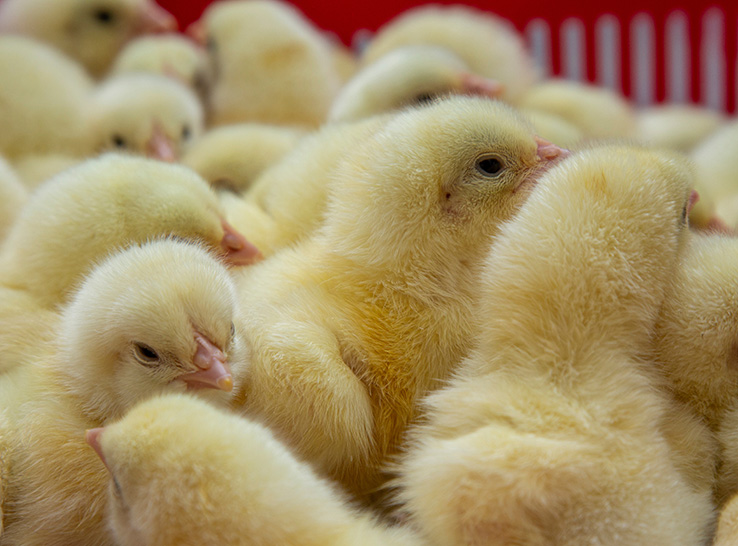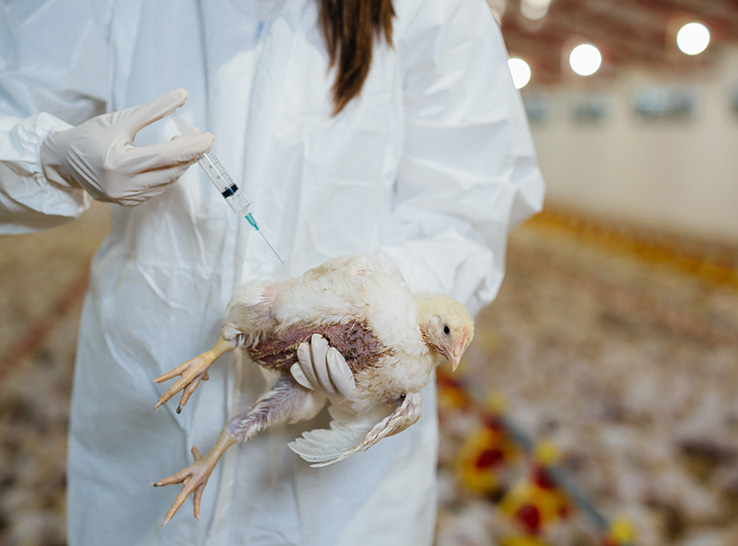 Vaccination is key to managing fowl cholera in poultry. For a program to be successful, however, it’s critical to train vaccination crews to monitor vaccine “takes” or major cutaneous reactions within a flock — no easy task with today’s employee shortages and rotating vaccination crews.
Vaccination is key to managing fowl cholera in poultry. For a program to be successful, however, it’s critical to train vaccination crews to monitor vaccine “takes” or major cutaneous reactions within a flock — no easy task with today’s employee shortages and rotating vaccination crews.
“A hurried vaccination process or inexperienced crew members can result in a high number of poor vaccination takes and potential fowl cholera breaks,” says Charlie Broussard, DVM, Merck Animal Health. “A proper vaccination should yield 95% to 100% post-vaccination takes.”
In general, a post-vaccination take is a nodule or scabby swelling at the wing-web vaccination site, and it needs to be checked 7 days post-vaccination. Notably, live-cholera vaccines can produce subtle differences in post-vaccination takes, so it’s good to know the variations.
- PM-1 strain vaccine: It may be more reactive and produces a visible nodule or scabby swelling; typically used in hens.
- M-9 strain vaccine: It is considered less reactive, and the post-vaccination takes typically appear as a small scab or a diffuse thickening. It’s especially critical to check at 7 days post-vaccination, because later than that is too late. This vaccine is often given to male birds.
Establish a post-vaccination takes-monitoring program
A monitoring program for post-vaccination takes not only confirms vaccination coverage, it also helps minimize the risk of cholera flare-ups or chronic problems.
“First, a post-vaccination takes check must occur at 7 days post-vaccination — not at 5 days, not at 9 days,” Broussard says. His other recommendations include:
- Check 100 birds per house (specifically, 50 birds from each end of the house).
- Pick up the bird and inspect the wing-web vaccination site.
- An acceptable take will display a nodule or scab about the size of a pencil eraser.
- A miss will offer no visible mark.
- A hit but no take will have a visible dye marking but no nodule or swelling.
- A muscle hit will show dye within muscle.
- An excess hit will produce a large nodule or an infected site.
“Determine how the post-vaccination takes will be scored, train the personnel doing the assessment and emphasize that they must be critical in their analysis,” Broussard notes. “Record both the quantity and severity of post-vaccination takes, then use this information to evaluate vaccination procedures and make adjustments.”
Poultry companies that routinely monitor post-vaccination takes and report scores back to the vaccination crew consistently score in the 95% range, he points out. Companies that monitor post-vaccination takes occasionally or not at all tend to average only 70% to 85% good takes, Broussard adds.
Troubleshooting missed birds
If the post-vaccination takes monitoring reveals a significant number of missed birds, then start by examining bird-handling techniques. For example:
- Are wing webs difficult to see or reach?
- Are vaccinators receiving too many birds at once or too quickly to ensure proper innoculations?
- Is the crew composed of several new members? Is the crew shorthanded? Are they unaware of the impact of missed birds?
“Definitely review the bird-presentation process,” Broussard advises. “One wing may be more difficult to hit than the other wing.”
He offers an example of a company that had poor post-vaccination takes because a vaccination crew member was left-handed and couldn’t hit the wing web properly compared with right-handed crew members because of bird presentation.
Check vaccine handling, too
Due to the fragile nature of live fowl cholera vaccines, it’s not uncommon to find evidence of wing-web sticks but no post-vaccination takes. If this occurs, Broussard recommends checking the vaccine-handling procedures:
- Keep the vaccine in a cooler onsite.
- Only rehydrate enough vaccine to last 30 minutes.
- Vaccination crews should not refill the same vial as vaccine levels get low.
- Ensure the correct diluent is used for the specific fowl cholera vaccine.
- Confirm that the vaccine wing-web applicator is being used correctly.
- If an automatic injector is being used, make sure the crew knows how to use it correctly.
- Check to see whether the vaccine is coming off on the surrounding feathers.
- Needles must be changed periodically to ensure that dull needles are not being used. They make it harder to punch through the wing web.
- Check to ensure that the vaccine is not being injected into the muscle.
If the assessment finds a number of very large takes or takes that are draining, it may reflect vaccine contamination in the field. Wing-web applicators should be changed frequently during the vaccination process.
Also, very large takes may indicate a vaccine with too many organisms (high titer) was used. Check the vaccine titer and applicator to determine whether birds are receiving too much vaccine.
“Flocks receiving a higher titer vaccine will be protected against fowl cholera field-virus challenge but may be prone to more reaction problems such as lameness or low-grade mortality,” Broussard says. “Following correct vaccination steps and routine post-vaccination monitoring will make all the difference in securing effective fowl cholera protection.”
For more information on managing fowl cholera, click here.
Editor’s note: Content on Modern Poultry’s Industry Insights pages is provided and/or commissioned by our sponsors, who assume full responsibility for its accuracy and compliance.









